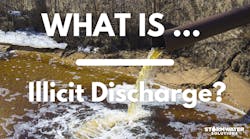Article Examines Sources of Phosphorus in Colorado River
The open access article for the February 2015 issue of Water Environment Research (WER) monitors the sources and influences of total phosphorus concentrations and loads along the Cache la Poudre River in northern Colorado. The study evaluates the sources and influences of total phosphorus under different hydrologic conditions.
According to WER Editor-in-Chief Tim Ellis, “the authors found that in-stream phosphorus concentrations varied with land use and rainfall events even in the pristine sections of the Cache la Poudre River is Northern Colorado. Aqueous and sediment monitoring showed that target phosphorus loads could not be met by point source control alone, especially during moderate and high rainfall events.”
From April 2010 to May 2011, the authors completed nine sampling events to assess the influence of various hydrologic conditions on aqueous and riverbed sediment total phosphorus concentrations.
They found that the total phosphorus concentrations and loads exceeded the in-stream limits proposed by the Colorado Department of Public Health and Environment in all observed hydrologic conditions, and that nonpoint sources were significant in high-flow conditions. This led to the conclusion that reducing nutrients only at water resource recovery facilities (WRRFs) could not achieve the in-stream limits without substantial reduction of non-point-source loads. As a result, the study exposed a need for flexibility in WRRF discharge limits based on the overall total phosphorus load in the river from other sources.crea
Formerly available to subscribers only, selected WER articles such as this one are available free to the public on a monthly basis through an open-access program. Download the open access article, “Total Phosphorus Input to the Cache la Poudre River in Northern Colorado,” by Ji-Hee Son, Stephen Goodwin and Kenneth Carlson.
Source: Water Environment Federation
Related


